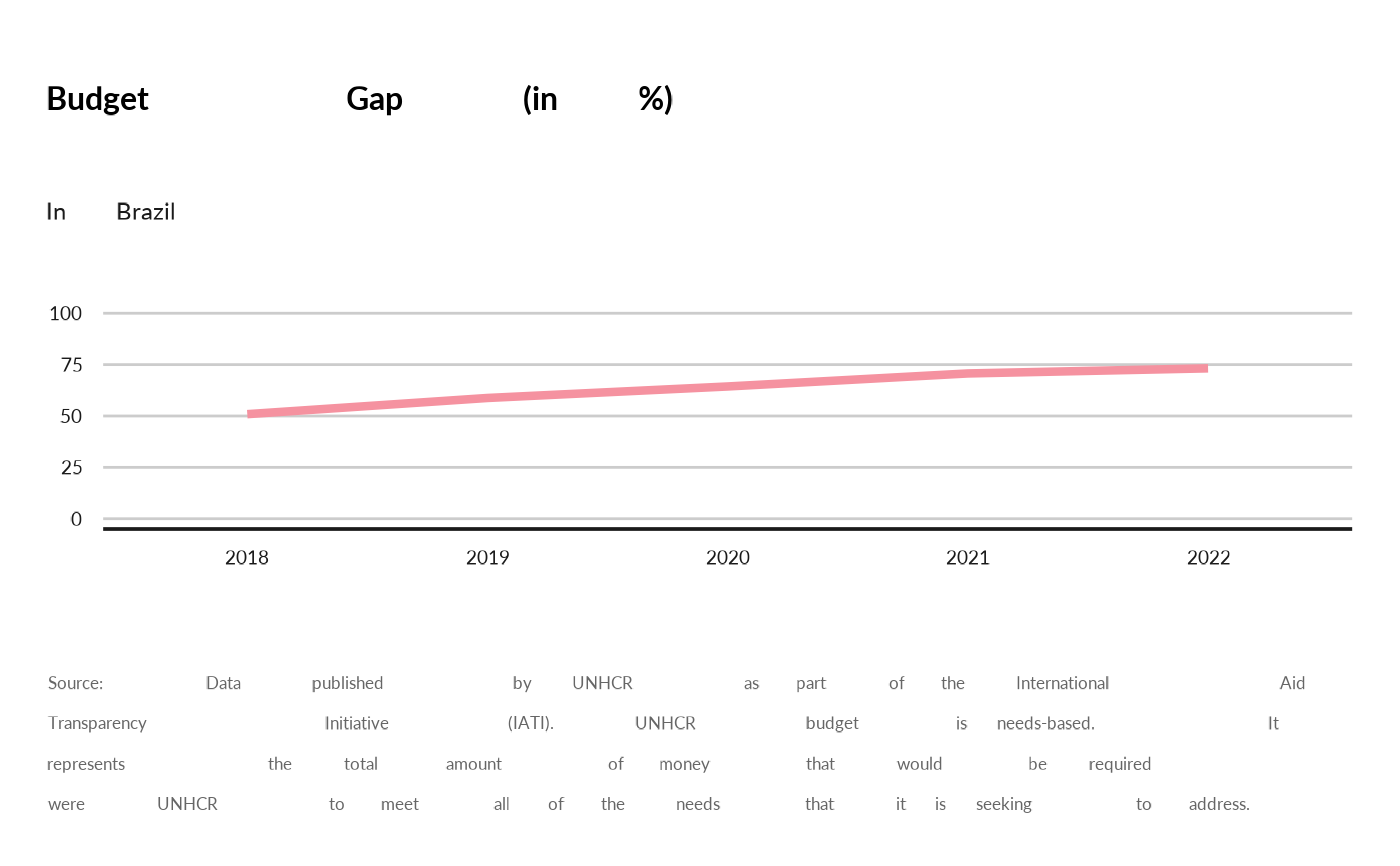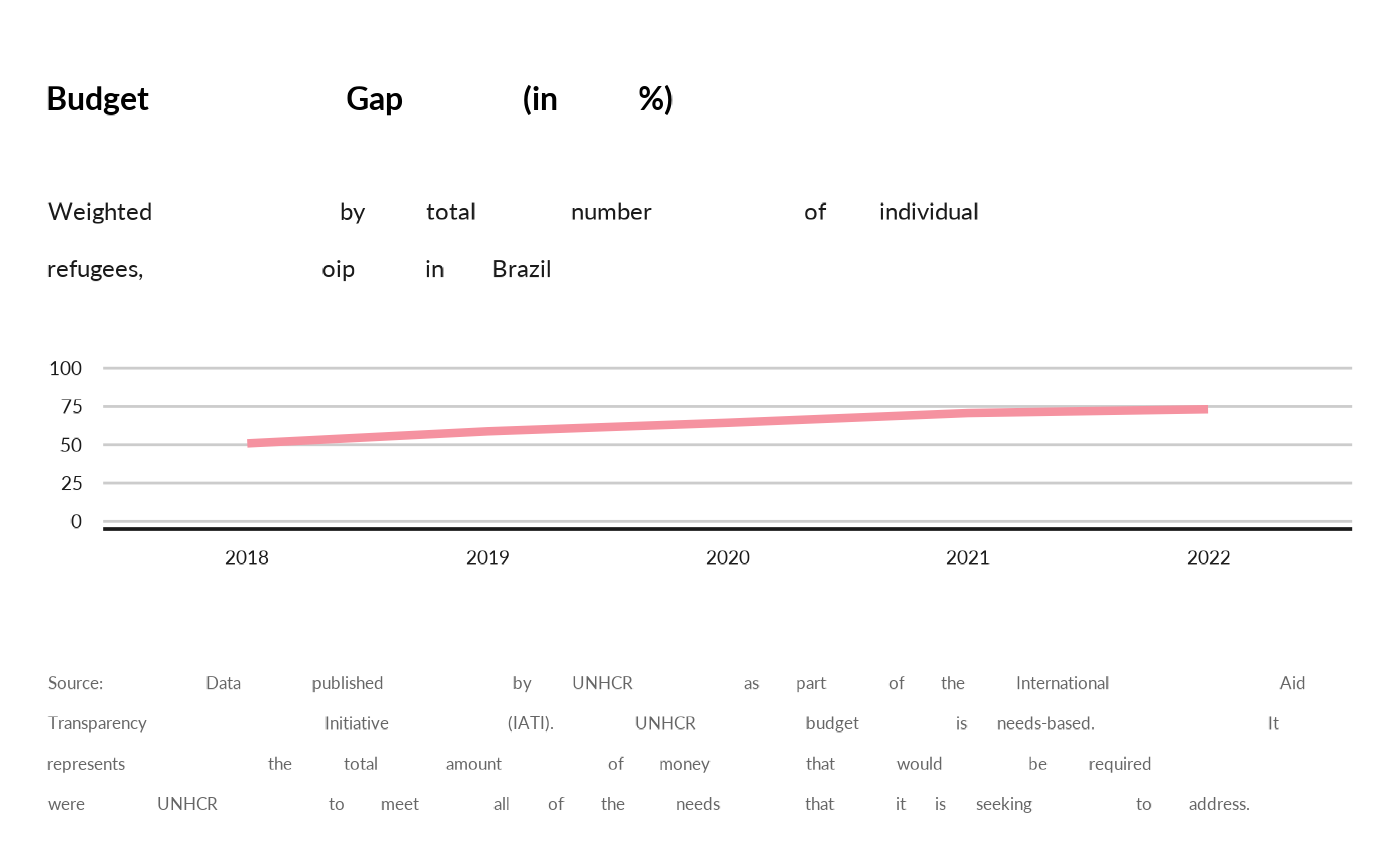UNHCR budgets are needs-based: it represents the total amount of money that would be required were UNHCR to meet all of the needs that it is seeking to address.
Usage
show_budget_gap(
year,
programme_lab = NULL,
iati_identifier_ops = NULL,
ctr_name = NULL,
weight_by = NULL
)Arguments
- year
A numeric value or a vector of numeric value to filter on year. Note that data pre-2022 are using a different set of indicators
- programme_lab
A character vector corresponding to the name of the programme.
- iati_identifier_ops
A character vector corresponding to the name of the operation.
- ctr_name
A character vector corresponding to the name of the country.
- weight_by
list of population group to weight the budget - "refugees", "asylum_seekers", "returned_refugees" "idps", "returned_idps", "stateless", "ooc", "oip" default is null.
Examples
show_budget_gap(year = c(2018, 2019,2020, 2021, 2022, 2023),
ctr_name = "Brazil")
 show_budget_gap(year = c(2018, 2019,2020, 2021, 2022, 2023),
ctr_name = "Brazil",
weight_by = c("refugees", "oip"))
#> Warning: There was 1 warning in `dplyr::filter()`.
#> ℹ In argument: `year >= thisyear & coa_name == thisctr_name`.
#> Caused by warning in `year >= thisyear`:
#> ! longer object length is not a multiple of shorter object length
show_budget_gap(year = c(2018, 2019,2020, 2021, 2022, 2023),
ctr_name = "Brazil",
weight_by = c("refugees", "oip"))
#> Warning: There was 1 warning in `dplyr::filter()`.
#> ℹ In argument: `year >= thisyear & coa_name == thisctr_name`.
#> Caused by warning in `year >= thisyear`:
#> ! longer object length is not a multiple of shorter object length
